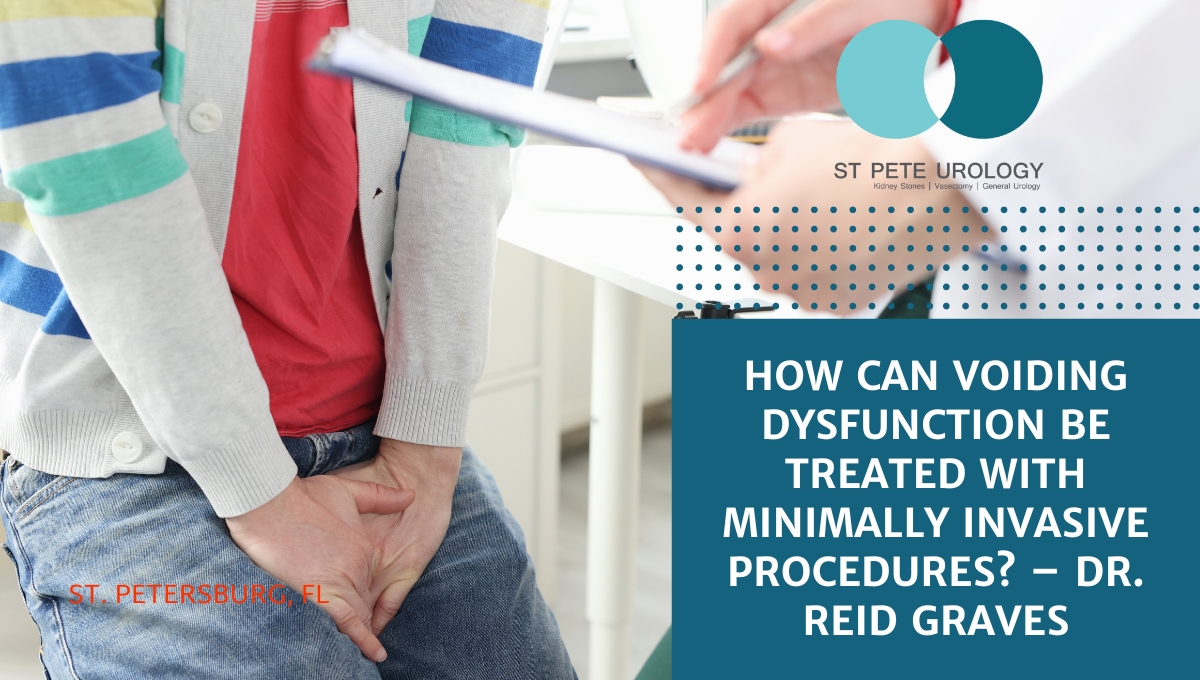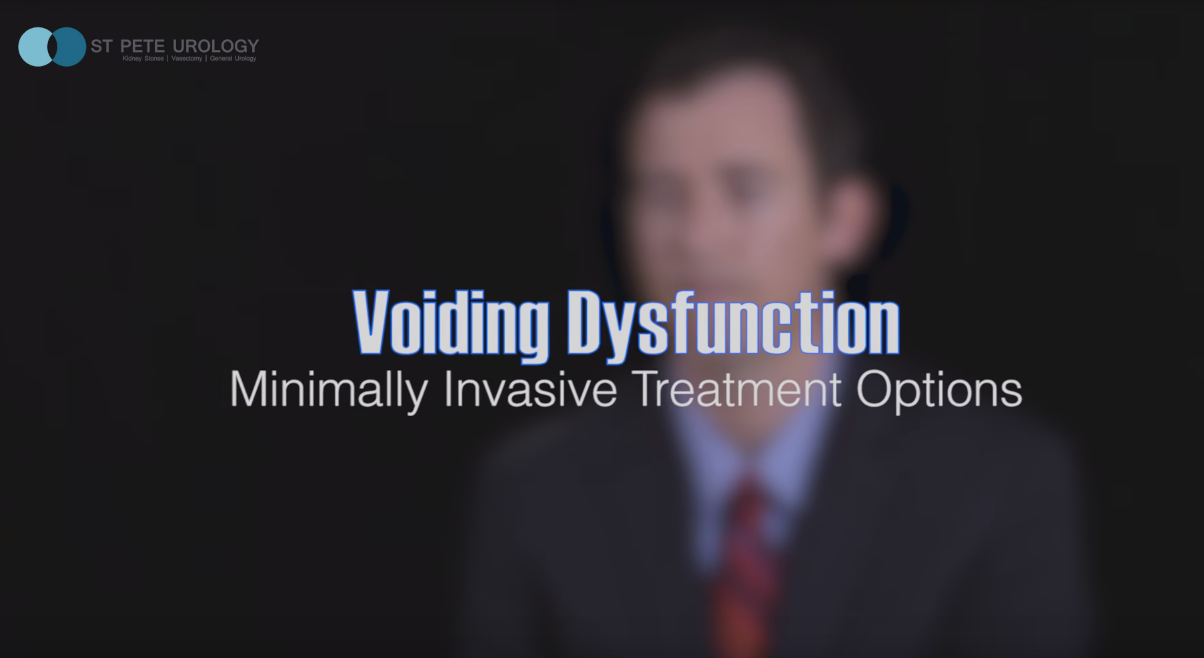Key Takeaways:
- Voiding dysfunction is a common problem among men which can cause frequent trips to the bathroom, difficulty emptying the bladder, and interrupted sleep.
- Minimally invasive procedures, such as green light laser surgery, can provide relief from voiding dysfunction with less blood loss, recovery time, and hospital stays.
- It is important to seek help from an experienced urologist when considering treatments for voiding dysfunction. St. Pete Urology in St. Petersburg, FL is committed to providing quality care to those struggling with this issue.
Introduction: A Common Problem Faced by Many Men
You’re not alone if you’re struggling with voiding dysfunction. It is one of the most common complaints that men have when they seek the help of a urologist. Dr. Reid Graves, a board-certified urologist, practices at St. Pete Urology in St. Petersburg, FL. He is here to assist individuals grappling with this frustrating issue. Let’s explore how minimally invasive procedures can provide relief and improve your quality of life.
Understanding Voiding Dysfunction
Voiding dysfunction can impact men’s lives in various ways, such as frequent and urgent trips to the bathroom, difficulty emptying the bladder, and interrupted sleep. This condition occurs when there’s a problem with the connection between the bladder and the urethra. It’s often caused by an enlarged prostate. This creates challenges as men attempt to urinate, leading to a range of unpleasant symptoms. Dr. Graves emphasizes the importance of finding an effective treatment, stating, “There are many options for treatment in this often difficult area.”
The Wonders of Minimally Invasive Procedures
In the past, treatment options for voiding dysfunction often involved more invasive surgeries. Now, advanced technology has made minimally invasive procedures a reality. These options significantly reduce blood loss, recovery time, and hospital stays. Dr. Graves mentions one popular minimally invasive treatment, saying, “Some of the things patients might have heard of are minimally invasive laser procedures such as the green light laser surgery of the prostate.” He goes on to explain how this innovative procedure compares to the traditional TURP method. In the traditional approach, the inside part of the prostate is removed. This is to improve the connection between the bladder and the urethra.
Green Light Laser Surgery – A Game Changer
Green light laser surgery has revolutionized the way urologists treat voiding dysfunction. This minimally invasive procedure works by removing the obstructing prostate tissue with a laser, allowing for improved urinary flow. Dr. Graves highlights the benefits of this procedure, saying, “The laser allows less blood loss and less hospital stay, and often patients go home the same day.” The reduced recovery time and minimal discomfort make it a preferred option for many men dealing with voiding dysfunction.
Finding the Right Urologist for You
It’s crucial to choose a urologist who has extensive experience and training in treating voiding dysfunction, especially when considering minimally invasive procedures. Dr. Graves assures that at St. Pete Urology, they have had “extensive comprehensive urologic training and it’s one of the best urology programs in the country.” Trusting your care to a skilled and knowledgeable urologist is the first step toward finding relief from voiding dysfunction.
Don’t Suffer in Silence – Seek Help From St. Pete Urology
Voiding dysfunction doesn’t have to control your life. With the innovative and minimally invasive procedures available at St. Pete Urology in St. Petersburg, FL, you can get back to enjoying your daily activities without constant worry about your urinary health. Don’t hesitate to reach out to the experienced urologists at St. Pete Urology, where they’re committed to helping you find the relief you deserve.
References:
- “Voiding Dysfunction – Urology – UCLA Health.” https://www.uclahealth.org/medical-services/urology/conditions-treated/adult-conditions/voiding-dysfunction.
- “BPH Laser Therapy With Greenlight | Laser for Enlarged Prostate.” https://www.treatmybph.com/bph-patient-us/treatment-options/laser-therapy-with-greenlight.html.
- “Voiding Dysfunction – Treatment Options – New York.” https://my.clevelandclinic.org/health/diseases/16394-non-neurogenic-voiding-dysfunction.
Transcription:
Hi, I’m Dr. Reid Graves and I’m a board certified urologist at St. Pete Urology.
One of the most common presenting complaints of men that present to a urology office is voiding dysfunction and trouble with urination. There are many options for treatment in this often difficult area for men to deal with and some of these are maximally invasive and but many of the options we have are minimally invasive.
Some of the things patients might have heard of are minimally invasive laser procedures such as the green light laser surgery of the prostate which is similar to what often people have heard of which is called a TURP where the inside part of the prostate is removed so that patients can void through their prostate which connects between the bladder and the urethra. The laser allows less blood loss and less hospital stay and often patients go home the same day. We had extensive comprehensive urologic training and it’s one of the best urology programs in the country.



